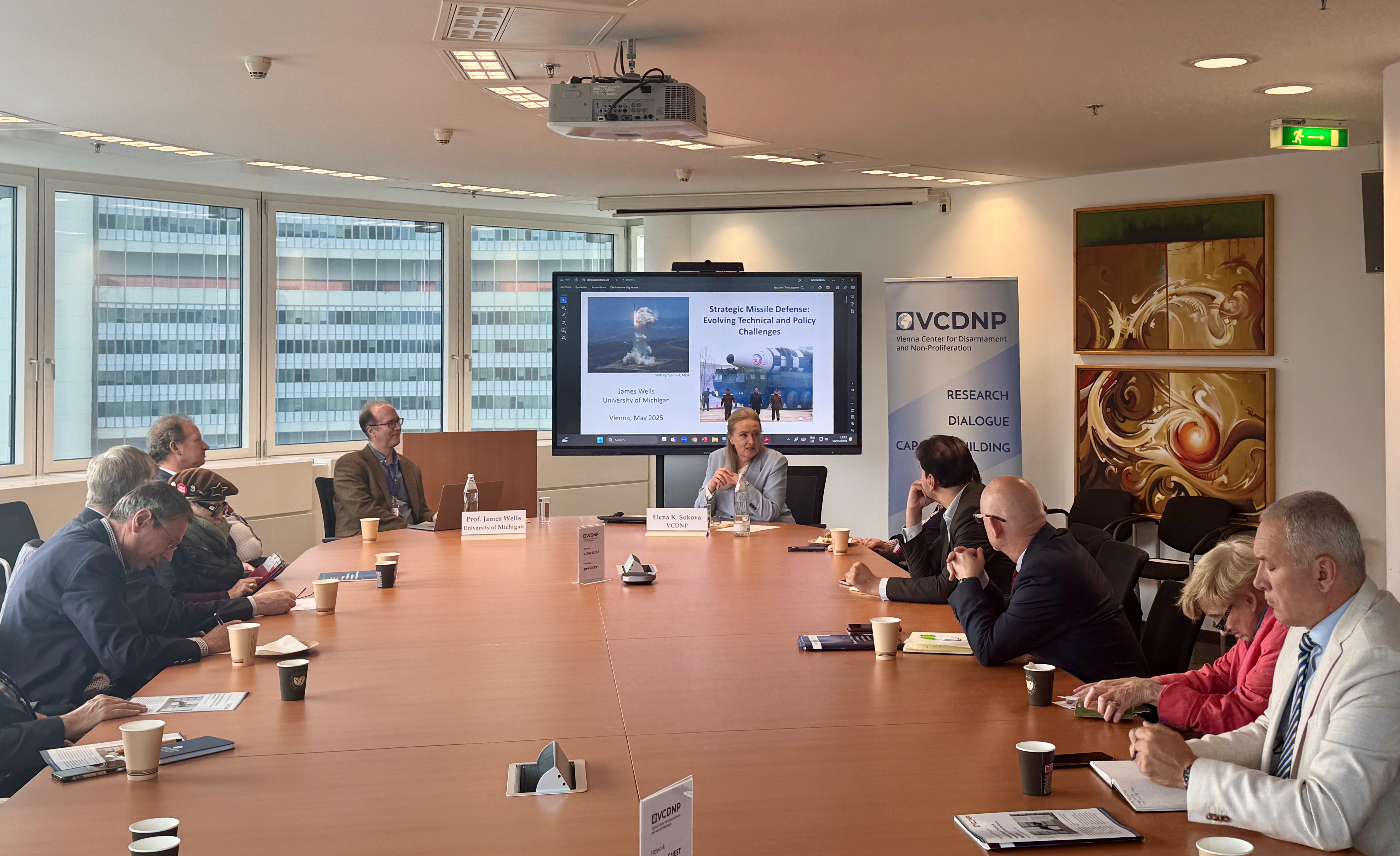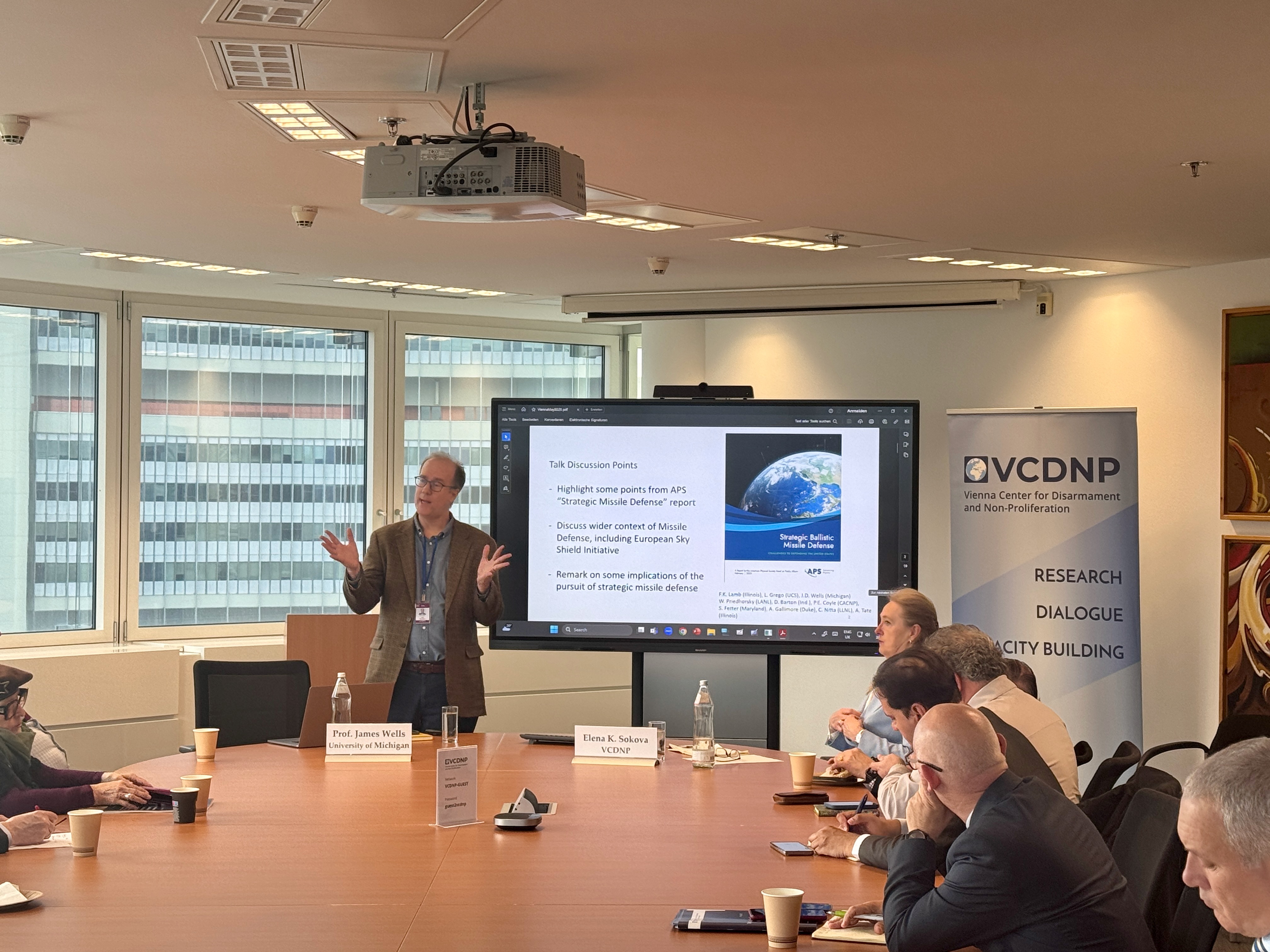
On 28 May 2025, the VCDNP hosted a seminar featuring Dr. James Wells, Professor of Physics at the Department of Physics and the Ford School of Public Policy at the University of Michigan. VCDNP Executive Director Elena K. Sokova moderated the seminar.
Dr. Wells presented key findings from an American Physical Society (APS) report "Strategic Ballistic Missile Defence: Challenges to Defending the United States", which examined the ability of the current and proposed US missile defence system to effectively counter nuclear-armed North Korean intercontinental ballistic missiles (ICBMs). The research represents a detailed technical assessment of the United States' $400 billion investment in ballistic missile defence over the past seven decades.

The APS report focused on a specific baseline threat: defending the continental United States against either a single nuclear-armed ICBM launched from North Korea or a salvo of 10 ICBMs launched in rapid succession. Dr. Wells explained that the study examined North Korean missiles like the Hwasong-15 and Hwasong-19, which, while less sophisticated than Russian or Chinese systems, still present significant challenges to existing defences.
"The threats a reliable missile defence system must be prepared for should be at least as challenging as this one", Dr. Wells emphasised, noting that North Korea likely already possesses capabilities beyond the baseline scenarios considered in the study.
The APS report analyses in detail the Ground-Based Midcourse Defence (GMD) system, currently the only operational system designed to counter North Korean ICBMs. With 44 interceptors deployed in Alaska and California, GMD is intended to destroy incoming warheads during their 20-30 minute midcourse flight phase. Dr. Wells described the challenges facing that system, particularly discriminating actual warheads from decoys and countermeasures. The report concludes that GMD has limited effectiveness against countermeasures of a sophisticated attack. As a result, the report concludes, the GMD system cannot be expected to provide sufficiently robust defence against more than an attack by a small number of relatively unsophisticated missiles within the study's 15-year time horizon.
Dr. Wells also examined boost-phase interceptor systems, which are intended to destroy ICBMs during the first 3-5 minutes of powered flight. While theoretically appealing because missiles are more vulnerable during this phase, Dr. Wells outlined "the severe reach-versus-time challenge". For North Korean launches, typical intercept points are 500 kilometres or more from potential interceptor basing locations, requiring extraordinarily fast interceptors to reach targets within the brief boost phase window. The study examined various basing options – land, sea, air, and drone platforms – for a boost-phase missile defence system, concluding that none could reliably defend the entire continental United States.
For space-based interceptor systems, the APS concluded that, since space-based platforms will have to be located at low orbit, countering even a single North Korean solid-propellant ICBM at any time would require over 1,600 orbiting interceptor platforms, whereas defending against 10 missiles launched simultaneously would take more than 16,000 platforms. Beyond the enormous costs, such systems would face significant vulnerabilities to anti-satellite weapons and various countermeasures, raising questions about their strategic value.
Dr. Wells also addressed the report's analysis of missile defence's broader implications for deterrence and arms control. Effective missile defence systems naturally encourage adversaries to build larger arsenals to overwhelm defences, potentially undermining existing arms control frameworks and discouraging efforts to minimise deterrence postures.
The APS report concludes that most fundamental challenges limiting the effectiveness of missile defence are technical in nature and have remained unresolved. The study projected that many of them will persist throughout the next projected period.
Despite these technical realities, Dr. Wells acknowledged that missile defence remains "an extremely appealing goal" for policy-makers seeking to defend against nuclear threats. The challenge lies in aligning public expectations and policy decisions with the technical realities outlined in the report.

